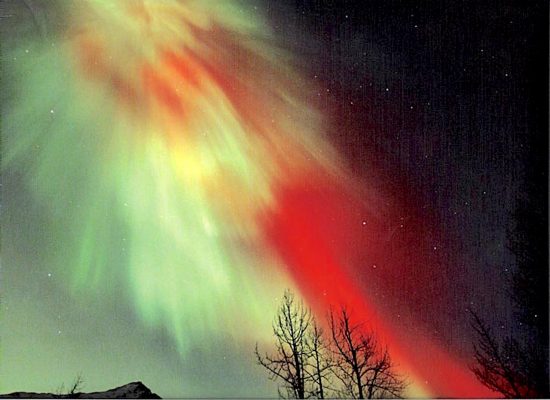
January 3, 2020
In 1966 the U.S. Navy satellite, TRIAD, recorded “disturbances” in Earth’s magnetosphere as it passed over the poles and through the Van Allen Radiation Belts.
Vertical electric charges that flow from the Sun into the Earth are known as “field-aligned currents”. In honor of Kristian Birkeland they were named, “Birkeland currents” by Dr. Alex Dessler. Those charged particles are captured in the magnetosphere, where they collect within the magnetotail.
Charged particles, mostly electrons, create electromagnetic instabilities that initiate bright aurorae. Birkeland, along with a research team, discovered that electric charges from the Aurora Borealis flowed parallel to the auroral formation. Since electricity must move in a circuit, and the aurora seemed to be caused by events in space, Birkeland proposed that its power came down from space at one end of the auroral arc and traveled back out to space at the other, exciting atmospheric molecules.
What does it mean when molecules are excited? When charged particles from the Sun strike atoms in atmospheric gases, electrons jump to higher-energy orbits, farther from the nucleus. When the radiation is reduced, those electrons return to lower-energy orbits, emitting light. The aurorae are like neon lamps in that regard: electricity excites gas within the glass tubes of neon signs.
Birkeland’s polar particle streams are now called auroral electrojets, and connect with electric circuits that follow Earth’s electromagnetic field into and away from the Arctic and Antarctic regions. Although NASA scientists acknowledge electric currents in their published papers, they persist in seeing them as “magnetic collision” effects in plasma.
According to NASA’s Time History of Events and Macroscale Interactions during Substorms (THEMIS) mission, large areas of the Aurora Borealis are sometimes seen to create intense bursts of light called substorms. As their announcement states:
“…plasma energy dissipation is controlled by field-aligned currents (FACs) produced and modulated during magnetotail topology change…”
“Knots” of electromagnetic energy move in conjunction with plasma jets traveling through the magnetotail. Plasma waves and instabilities are generated when jets reach the magnetotail’s inner boundary. Radar stations in Alaska and Greenland sometimes detect return signals from streams of plasma in Earth’s upper atmosphere just before the aurorae collide, a longstanding puzzle for astrophysicists.
According to a recent press release, they are still uncertain about the magnetosphere’s behavior. Jennifer Briggs, a physics student at Pepperdine University, said:
“This motion is something that we’ve never seen before. This eastward and then westward and then spiraling motion is not something that we’ve ever seen, not something we currently understand.”
In fact, THEMIS scientists already found that those fast-moving substorms “crash into” large-scale, slow-moving aurorae, forming an auroral “knot” of plasma. When they collide there is an abrupt flash. THEMIS confirmed those plasma streams speeding toward Earth. Rather than kinetic collisions or compression, it is variations in electromagnetic relationships that are seen.
Retired Professor of Electrical Engineering, Dr. Donald Scott, follows along with Birkeland in his recent analyses of counter-rotating electromagnetic fields in Jupiter’s electrical environment, as well as in Earth’s magnetosphere. Those counter-rotating force fields generate tremendous electromagnetic induction, giving rise to many of the phenomena deemed “mysterious” by consensus scientists.
Most astrophysicists downplay or deny the importance of electrical processes, and ignore the work of plasma pioneers like Kristian Birkeland or Dr. Scott or Hannes Alfven, for that matter.
New discoveries are really confirming the work done by others today, and more than 100 years ago.
Stephen Smith
Hat tip to Jimmy Walter
The Thunderbolts Picture of the Day is generously supported by the Mainwaring Archive Foundation.












